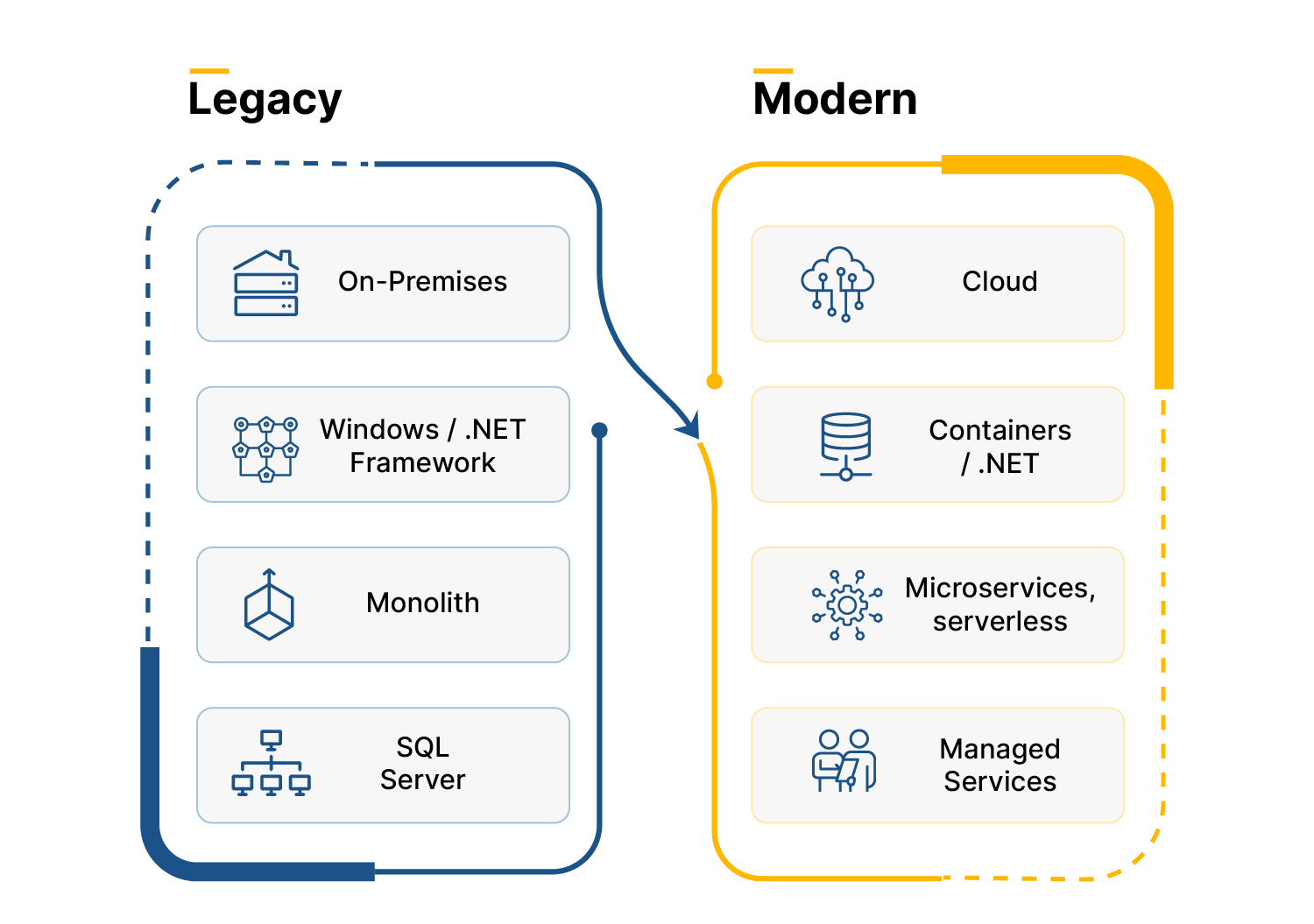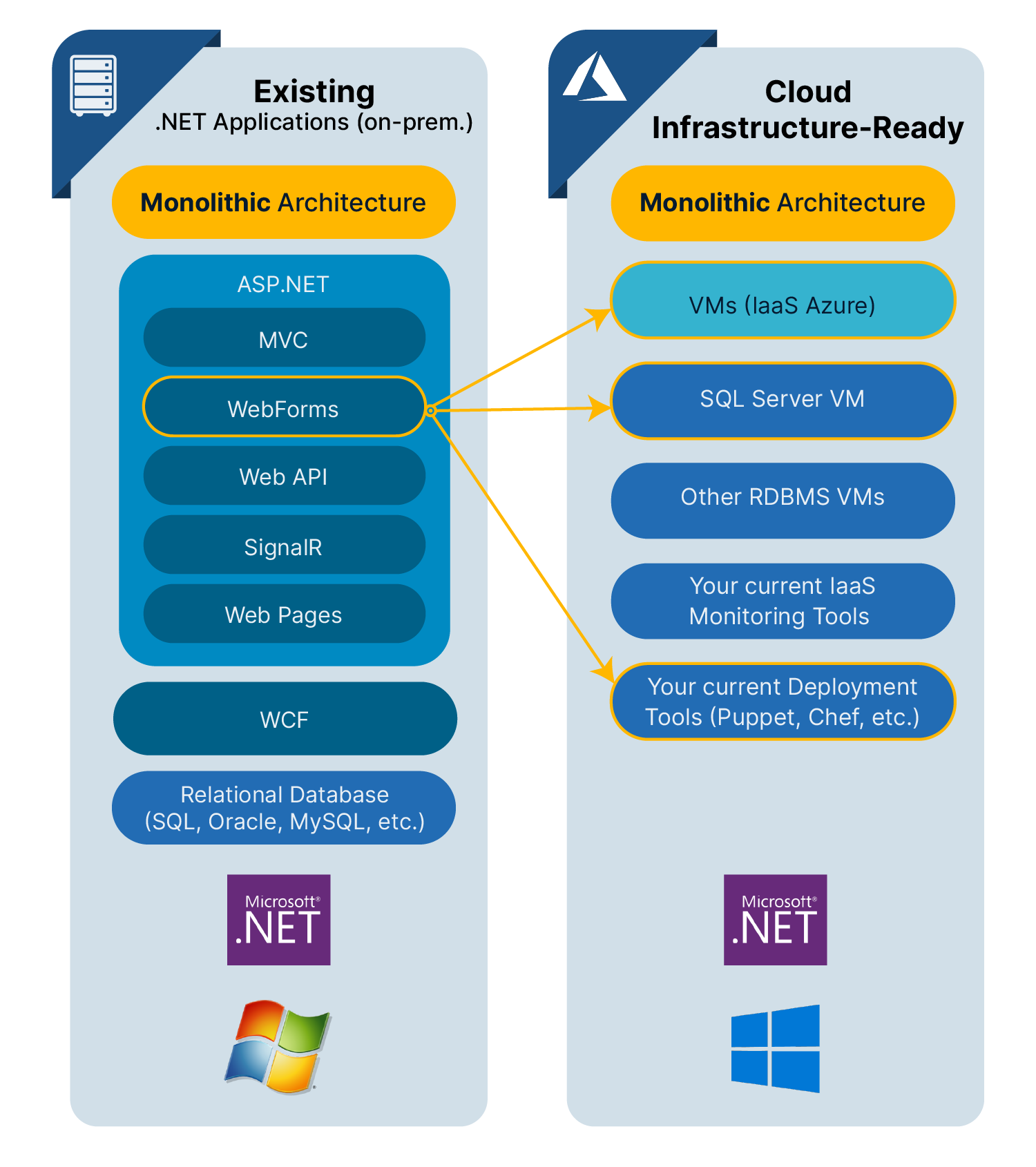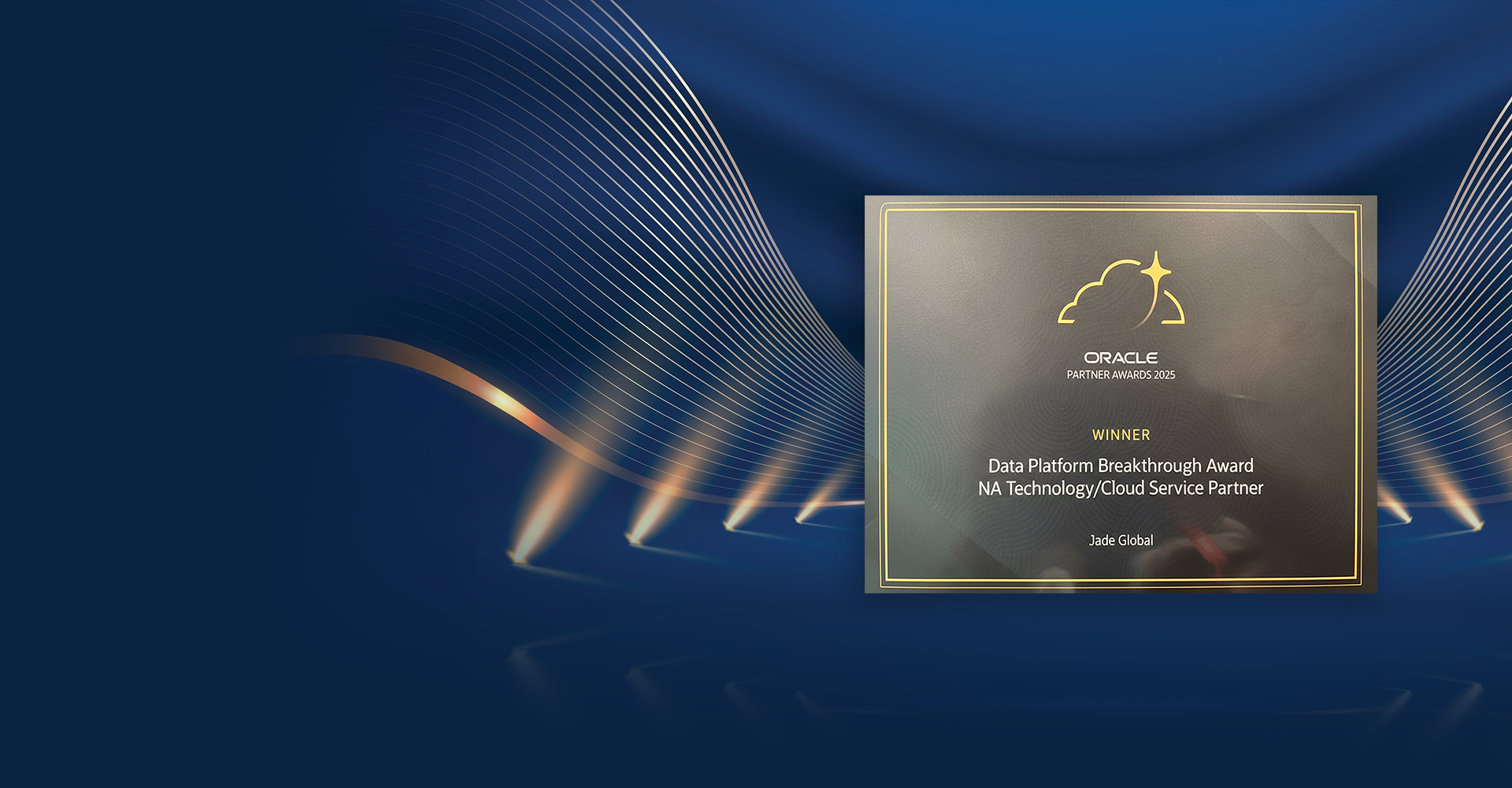In the ever-shifting terrain of the modern business world, the imperative is clear: companies must continually adapt and enhance their software applications to remain competitive and at the forefront of innovation. This mandate for modernization is particularly compelling in the realm of existing .NET projects. Modernizing .NET applications isn't merely an option; it's a strategic necessity. Transforming legacy applications into contemporary, agile systems offers a wealth of tangible benefits, from enhancing performance and streamlining maintenance to integrating the latest user experience trends and fortifying security measures.
In this blog post, we will delve into the significance of modernizing .NET applications, look into the application modernization benefits and explore different application modernization strategies that you can adopt through Jade Global's application modernization services.
Characteristics of legacy applications and modern cloud-based applications

Importance and Benefits of Modernizing .NET Projects:
- Performance Improvement: Legacy .NET code suffers from performance issues due to outdated frameworks. Modernizing your .NET project allows you to take advantage of the latest improvements from Microsoft, which will lead to faster execution and reduced time. The latest update also comes with performance improvements and new features. Efficient data access, Concurrent programming, and parallel processes in the latest version enable applications to take advantage of multi-core processors, leading to better performance.
- Memory Management: When you modernize applications, the user can use the latest libraries and optimized code that might not have been optimized for memory usage. One of the application modernization benefits is that it allows developers to implement better memory management, reducing memory leaks and improving overall application performance.
- Scalability and Agility: Any projects need to be scalable and adapt to the latest demands. Application modernization services give us access to cloud platforms, which will allow applications to handle increased traffic.
- A microservices service will help divide the project into smaller services, which will make it easier to handle changes and improvements without affecting the entire application.
- The latest containerization technology allows for better portability and scalability. Containers encapsulate the application and its dependencies, enabling seamless deployments.
- Advanced monitoring and analytics tools provide insights into the application's performance and user behavior, which will help for better scalability.
- Design patterns allow the application to be more adaptable to changes and easier to scale.
- Continuous Integration and Continuous Deployment (CI/CD) automates the process of building, testing, and deploying code changes. This allows rapid and frequent updates, ensuring your application stays agile.
- Maintenance: Legacy code becomes difficult and expensive to maintain with time. Old frameworks and dependencies pose security risks to applications, and the complexity of code hampers productivity. Legacy application modernization services involve code refactoring, which consists of removing deprecated code, optimizing algorithms, and the latest coding standards. A cleaner and more organized codebase is easier to maintain and understand. Security enhancement reduces the risk of vulnerabilities. This way, modernizing .NET applications gives you a more secure application that requires less maintenance related to security incidents and breaches, streamlining the ongoing maintenance.
- User Experience and Modern UI: Modernizing .NET applications allows you to have modern UI/UX design, resulting in visually appealing user interfaces and responsive designs, which will increase user satisfaction and customer retention. Through legacy application modernization services, you can easily identify areas where the latest UI frameworks and libraries can be leveraged to improve the overall UX of your applications.
- Cost Savings: While modernizing projects requires an initial investment, the long-term cost savings can be more. With optimized performance, scalability, and reduced infrastructure costs, applications can make efficient use of resources and dynamically scale. Azure has a pay-as-you-go pricing model that assists organizations in reducing their infrastructure costs by only paying for what they use, which can be used by companies to reduce their Total Cost of application management.
Choose the Right Application Modernization Strategy
Modernizing .NET applications requires the appropriate strategy that can be aligned with the project requirements and goals as per business needs. Budget and time constraints require different strategies for different workloads. Nowadays, several legacy application modernization paths are available, including Rehosting, re-platforming, rearchitecting, containerization, and cloud migration. Hence, it's essential to evaluate all the options and decide which is best for the business.
Application Modernization Strategies:
Rehosting:
Popular as "Lift & Shift", rehosting is the process of migrating on-premises applications to cloud-infrastructure-ready platforms without modifying them.
- In this approach, current on-premises applications migrate or rehost to an Infrastructure-as-a-service (IaaS) platform.
- Applications will retain nearly the same composition as their on-premises versions. Still, they will now be deployed on virtual machines in the cloud, with almost the same composition as before.
- This approach is primarily used for the migration of large-scale applications, aiming to meet business objectives and give the cloud basic benefits.

Re-platforming:
Re-platforming refers to the process of transferring a .NET project from one platform to another, such as moving from on-premises infrastructure to a cloud platform like Azure or AWS, while maintaining the application architecture with minimal alterations.
- The main goal of re-platforming is to leverage the benefits of cloud computing without undergoing extensive redesign or restructuring of the application's core framework.
- In this approach, containers can be deployed on both IaaS and Platform-as-a-Service (PaaS) setups, along with the utilization of various cloud-managed services like database services, cache as a service, monitoring tools, and continuous integration/continuous deployment (CI/CD) pipelines.
- Re-platforming a .NET application as a Windows container offers the benefit of using container technologies without requiring any modifications to the fundamental architecture of the .NET application.
- It's an ideal approach when the existing architecture and codebase are relatively sound, and the primary goal is to leverage cloud services or modern infrastructure.
Rearchitecting and Rebuild:
It is moving to cloud-native modernization, which involves making significant changes to application architecture; this consists of migrating from monolithic applications into more scalable and maintainable architectures such as microservices or serverless.
- This method requires rearchitecting the applications for the cloud, and most of the time, the code needs to be rewritten entirely.
- This approach helps applications achieve the highest level of application maturity and makes them best suited for mission-critical use cases. Rearchitecting can offer benefits such as enhanced scalability, fault isolation, and improved agility.
- This approach is particularly suitable for projects that require greater flexibility, adaptability, and the ability to leverage modern architectural patterns.
Containerization:
Containerization involves encapsulating a .NET application and its dependencies into containers using technologies like Docker.
- This approach offers advantages such as improved portability, scalability, and deployment consistency across different environments. Containerization allows for efficient resource utilization, simplified deployments, and easier management of dependencies.
- It is suitable for projects that require scalability, rapid deployment, and flexibility in hybrid or multi-cloud environments.
Move Ahead with Jade's Application Modernization Services
Relying on old-fashioned ways of making changes can slow down organizations. Application modernization isn't just about making your applications work better; it's also about transforming your organization to keep up with the modern market.
For the past two decades, Jade Global has been a trusted partner in digital transformation services. Our Application Modernization services cover everything in the software development process, from improving the core digital systems to engineering digital products and ensuring quality. Our proven framework includes design thinking, co-creation, market-validated human-centered design, and automation.
If you want to take your business to the next level with the latest technologies, check out our Application Modernization services.













